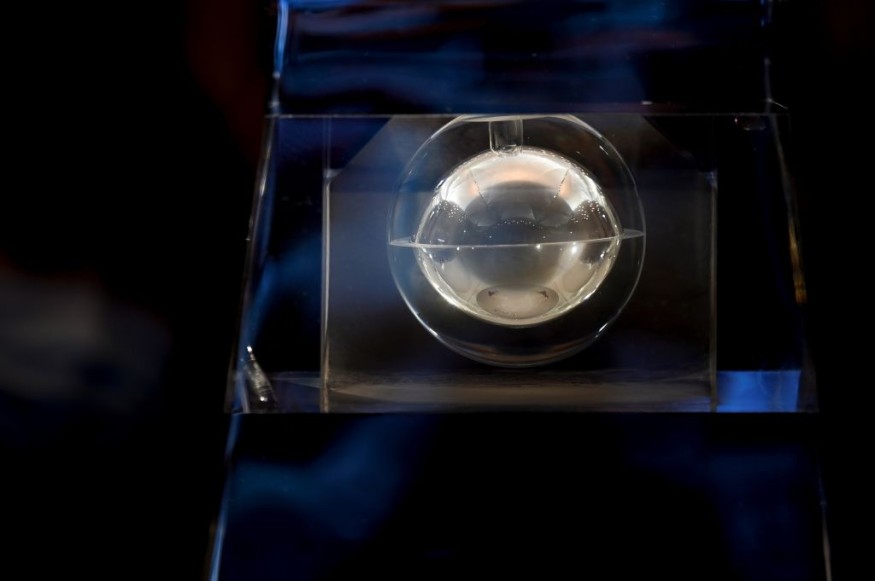In an unusual move toward U.S.-Chinese collaboration in space exploration, NASA is encouraging scientists it supports to seek access to lunar soil and rocks collected by China's Chang'e 5 mission in 2020.
Despite a U.S. law restricting NASA-funded projects with China, the agency can permit such collaborations after certifying to Congress that there's no risk of technology or data transfer and no involvement of Chinese officials linked to human rights violations.

NASA Allows Lunar Collaboration with China's Lunar Samples
Recently, NASA informed planetary scientists via email that it had obtained this certification, allowing researchers to apply to China's National Space Administration (CNSA) for utilizing Chang'e 5 samples. The analysis of these samples could offer valuable insights into the Moon's geological history and potentially contribute to NASA's future lunar exploration plans.
The recent NASA initiative has been hailed as a significant breakthrough by Clive Neal, a lunar scientist at the University of Notre Dame. Following the Chang'e 5 sample return, U.S. researchers actively lobbied NASA to explore accessing lunar samples, and the current move is considered a substantial opportunity for lunar science.
However, there's no certainty that the China National Space Administration (CNSA) will approve U.S. proposals, as decisions will be made by an expert committee reviewing international applications. Despite potential challenges, there is enthusiasm in China for the collaborative opportunity, with planetary geoscientist Long Xiao expressing happiness and anticipating positive contributions to lunar science.
The existing ban on bilateral cooperation, as outlined in the Wolf amendment added to NASA's annual appropriations bill in 2011, has been a longstanding obstacle. Crafted by former Representative Frank Wolf, the amendment aimed to prevent technology leaks to China and encourage improvements in human rights.
Despite its intentions, a 2019 review highlighted that the Wolf amendment has not deterred Chinese space ambitions or prompted changes in China's human rights behavior. Makena Young, an aerospace security expert, advocated for revising the amendment, emphasizing its negative impact on mutually beneficial scientific collaboration.
The ability to apply for Chang'e 5 samples using NASA funds is seen as a crucial step in advancing cooperation, with researchers hoping for the possibility of a sample exchange in the future and viewing the current exception as a potential precedent for future collaborations, such as the upcoming Chang'e 6 mission.
READ ALSO : China's Chang'e-5 Mission Finds Mineral on the Moon That Could be Used for Nuclear Fusion
Chang'e 5: China's Lunar Samples Return Mission
The Chang'e 5 mission exemplifies China's technological achievements, marking the third country to retrieve Moon samples after the U.S. and the former Soviet Union. The mission strategically targeted a unique landing site, contributing valuable insights into lunar science.
The spacecraft landed in the Moon's Ocean of Storms, specifically near a 70-kilometer-wide mound called Mons Rümker, known for young volcanic rocks. Lunar scientist Clive Neal highlights the significance of the Chang'e 5 samples, which differ in age from previous lunar materials, providing a fresh perspective on lunar history.
Studying these late-formed rocks from the Moon aids scientists in understanding the Moon's evolution and its potential implications for Earth and the broader solar system.
Following the delivery of Moon samples to Earth, Chang'e-5 traveled to the Sun-Earth Lagrange point 1 (L1) for solar observations and technology tests. It later returned to the Moon, entering a fuel-efficient Distant Retrograde Orbit (DRO) to conduct further technology tests for upcoming Chinese missions.
RELATED ARTICLE: China to Launch 3 Moon Orbiters in the Next 10 Years After Discovering New Mineral From Lunar Samples Could Be Future Source of Energy
Check out more news and information on Moon Mission in Science Times.
© 2025 ScienceTimes.com All rights reserved. Do not reproduce without permission. The window to the world of Science Times.











